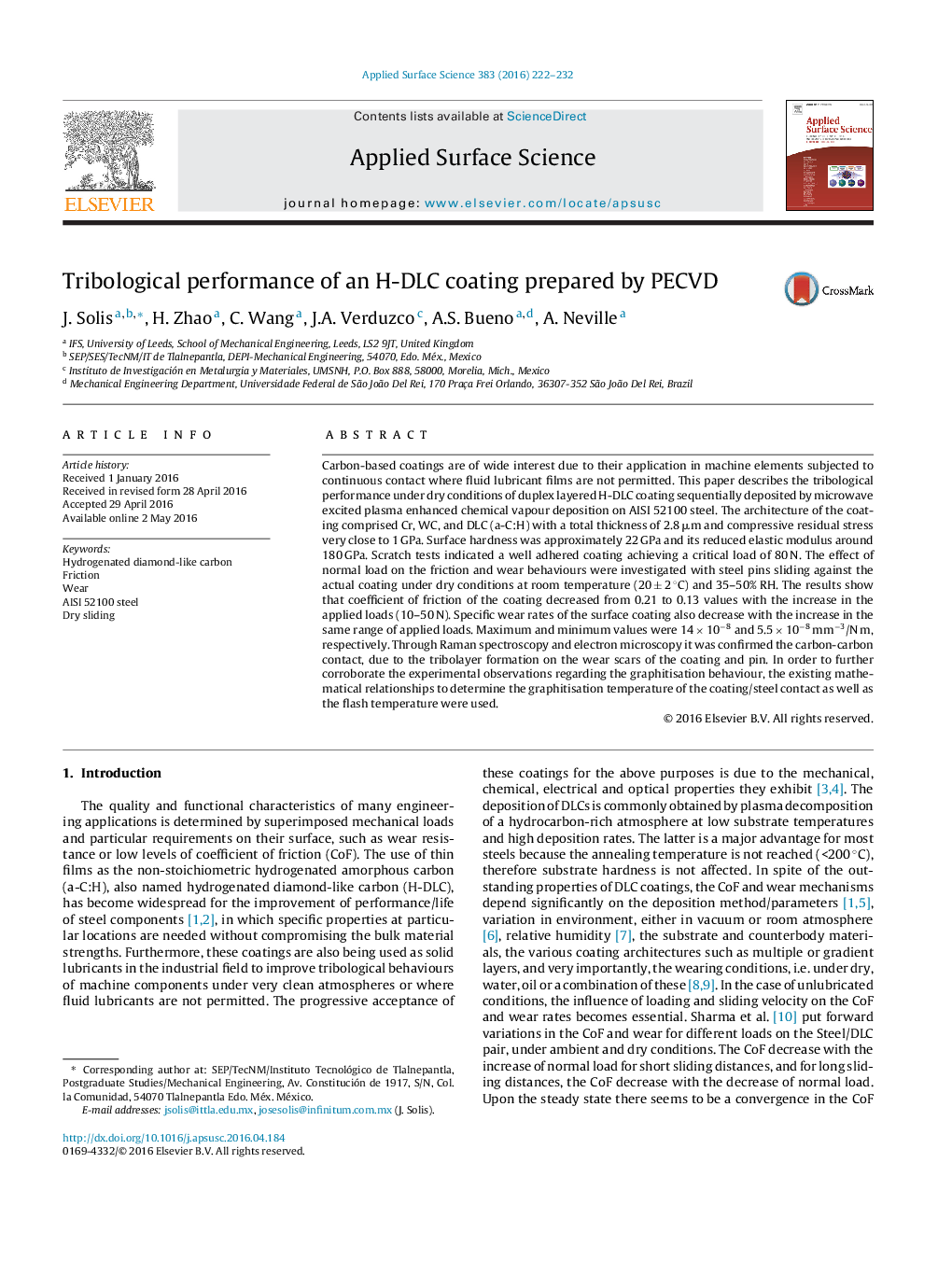| کد مقاله | کد نشریه | سال انتشار | مقاله انگلیسی | نسخه تمام متن |
|---|---|---|---|---|
| 5347441 | 1503584 | 2016 | 11 صفحه PDF | دانلود رایگان |

- Duplex hydrogenated Diamond-like Carbon was produced and characterised.
- Friction and wear under dry condition of H-DLC/steel tribopair was assessed.
- Adhesive strength of the coating was 80N after the scratch tests under dry condition.
- Maximum and minimum values of average coefficient of friction were 0.21 and 0.13.
- A protective transferred layer on the counterpart produced a carbon-carbon contact.
Carbon-based coatings are of wide interest due to their application in machine elements subjected to continuous contact where fluid lubricant films are not permitted. This paper describes the tribological performance under dry conditions of duplex layered H-DLC coating sequentially deposited by microwave excited plasma enhanced chemical vapour deposition on AISI 52100 steel. The architecture of the coating comprised Cr, WC, and DLC (a-C:H) with a total thickness of 2.8 μm and compressive residual stress very close to 1 GPa. Surface hardness was approximately 22 GPa and its reduced elastic modulus around 180 GPa. Scratch tests indicated a well adhered coating achieving a critical load of 80 N. The effect of normal load on the friction and wear behaviours were investigated with steel pins sliding against the actual coating under dry conditions at room temperature (20 ± 2 °C) and 35-50% RH. The results show that coefficient of friction of the coating decreased from 0.21 to 0.13 values with the increase in the applied loads (10-50 N). Specific wear rates of the surface coating also decrease with the increase in the same range of applied loads. Maximum and minimum values were 14 Ã 10â8 and 5.5 Ã 10â8 mmâ3/N m, respectively. Through Raman spectroscopy and electron microscopy it was confirmed the carbon-carbon contact, due to the tribolayer formation on the wear scars of the coating and pin. In order to further corroborate the experimental observations regarding the graphitisation behaviour, the existing mathematical relationships to determine the graphitisation temperature of the coating/steel contact as well as the flash temperature were used.
172
Journal: Applied Surface Science - Volume 383, 15 October 2016, Pages 222-232